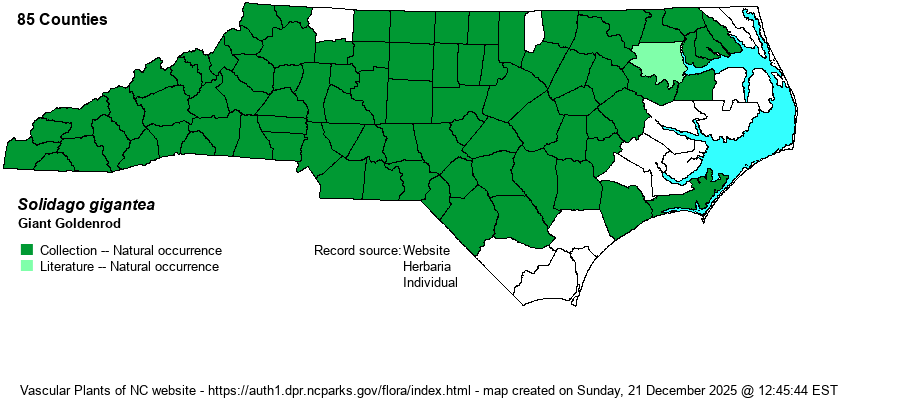| Author | Aiton | |
| Distribution | Throughout the state, except nearly absent from the outer Coastal Plain.
N.S. to Sask. and MT, south to northern FL, TX, and CO. | |
| Abundance | Common across the state, other than the outer Coastal Plain, where rare and local. Can be locally abundant, but not nearly as abundant as is the similar-looking Tall Goldenrod (S. altissima). | |
| Habitat | Moist to wet meadows, margins of freshwater marshes, streamhead ecotones, bottomlands and their edges, swamp openings, roadside ditches. Sometimes found in less wet sites, such as fields -- but generally considered a wetland species. |
| Phenology | Flowering and fruiting August - early October. | |
| Identification | Giant Goldenrod is among our tallest species, typically 3-6 feet but as much as 7 feet. Stems are very leafy, the leaves lance-shape, tapered to a point, and toothed on the margins. The stems are smooth and glaucescent, white to flesh-pink. The inflorescence is typically triangular in outline and tapers to a point; branches are usually curved. It closely resembles Tall Goldenrod, and may be found together, but that species has hairy stems, and leaves are very short-hairy beneath and rough above; that species usually grows in drier and more upland sites. | |
| Taxonomic Comments | None
| |
| Other Common Name(s) | Smooth Goldenrod, Tall Goldenrod (used for S. altissima) | |
| State Rank | S5 | |
| Global Rank | G5 | |
| State Status | | |
| US Status | | |
| USACE-agcp | FACW link |
| USACE-emp | FACW link |

